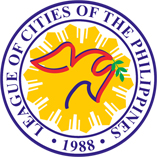Just as the world is becoming increasingly urban – an estimated 75 percent of global population will live in cities by 2050 – so too is the Philippines. Out of an estimated 109 million people as of 2020, 45 million (or 41 percent) of them live in just 149 cities across the Philippines. The rest live in approximately 1,500 municipalities and rural areas.
By their sheer concentration of people, cities are faced with challenges on the social and infrastructure front such as public health delivery, transportation and traffic, poor infrastructure, delivery of basic goods and services, garbage collection, law enforcement, and even natural disasters are more acutely felt in cities and metropolitan areas.
At Liveable Cities, we believe that if properly designed and managed, cities and metropolitan areas can generate great benefits to people and nation in the form of economic development, productivity, and creativity. Cities are economic engines, contributing up to 80 percent of global GDP.
We’ve often been asked what makes a city Liveable and ready for the future. While smart cities typically have been cited as the wave of the future, upon deeper discussion with people we’ve learned that many other aspects come to mind to make a city Liveable and Future-Ready.
Through our Liveable Cities Labs, we aim to provide some greater focus on some of the following themes, in no particular order enumerated below. Our goal is to bring together Mayors, city planning officials, and experts together to discuss these themes in depth. Through this collaborative approach, we hope to support an exchange of ideas, best practices, and solutions for urban development.
Resilience: Navigating Natural Disasters and Building Stronger Communities. Though 2023 was a relatively mild year in terms of typhoons and storms – “only” 11 versus the usual 20 plus – you can count on climate change to cause disruption either in the form of typhoons, floods, or drought in different parts of the country. Moreover, the Philippines also faces risk from earthquakes and volcanic eruptions. One must remember that the country is ranked No. 1 – meaning riskiest – in the World Risk Index not because of exposure to natural hazards (many other countries do as well) but because we are least-prepared for it. Because of their large populations and density, cities will need to address the impact of natural disasters on urban areas and explore strategies to build resilience, minimize damage, and expedite the recovery process. Cities will need to undertake both climate mitigation and adaptation strategies.
Intelligent Cities and Connectivity as a Utility. Just as Electricity and Water are considered as utilities built into homes, buildings, and communities, so too should Connectivity and your Internet and WiFi. This is the first step towards building an Intelligent City. If there’s one positive thing which COVID brought is that it accelerated the growth of a digital, connected lifestyle. Work, dining, recreation, education, retail, and banking were all transformed from face-to-face interaction to virtual, digital transactions. There’s hardly any interaction that doesn’t have a digital interaction option, except for some government services which stubbornly remain analog and manual.
Developing a “connectivity as a utility” mindset and regulatory framework will only accelerate this trend. Imagine stepping into a newly-built building, apartment, or home and turning on and activating your WiFi by simply messaging your telco and not having to wait for an installation team to visit. If only Connectivity could work like Electricity and Water, pre-installed at the construction stage.
As that connectivity network is expanded, think of possibilities for Intelligent Cities; from Digital Permitting and E-Payments for City Hall and National Government transactions to better traffic management, law enforcement, disaster monitoring and response, air and water quality monitoring, and many other things which can be done with the help of technology.
Mobility: Navigating a Path to Sustainable Transportation Solutions. All major cities around the world face the challenge of mass transit and mobility. Many have solved or at least alleviated the pain of the daily commute. Philippine cities have not. Mass transit options are limited and road infrastructure is inadequate, leading to traffic jams and long commutes for residents. Metro Manila was just recently cited in one international report as having the worst traffic in the world for any metropolitan area. Motorists spent 117 hours stuck in traffic in 2023 in the national capital region.
Part of the problem lies in the inadequate mass transit system but another part seems to lie in the basic design of our cities. Fortunately, more cities are planning and building alternatives such as more pedestrian walkways and bicycle lanes. But real transformation might take place if we studied more closely the concept of the “15-minute city” where most facilities and transit access points such as bus stops are roughly 15 minutes away from any residence. It’s a tall order but something that would certainly make a big difference in large metropolitan areas.
These are just a few ideas of what might make a city more liveable. I’m sure that collaboration of city officials with professional urban planners and ordinary citizens from all walks of life will yield many more ideas of what can be improved in a city.
GUILLERMO M. LUZ
Chairman, Liveable Cities Philippines
Chief Resilience Officer, Philippine Disaster Resilience Foundation











